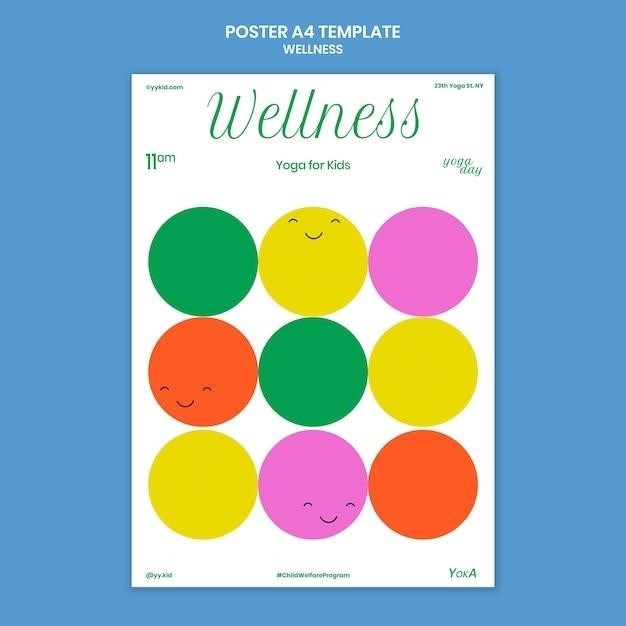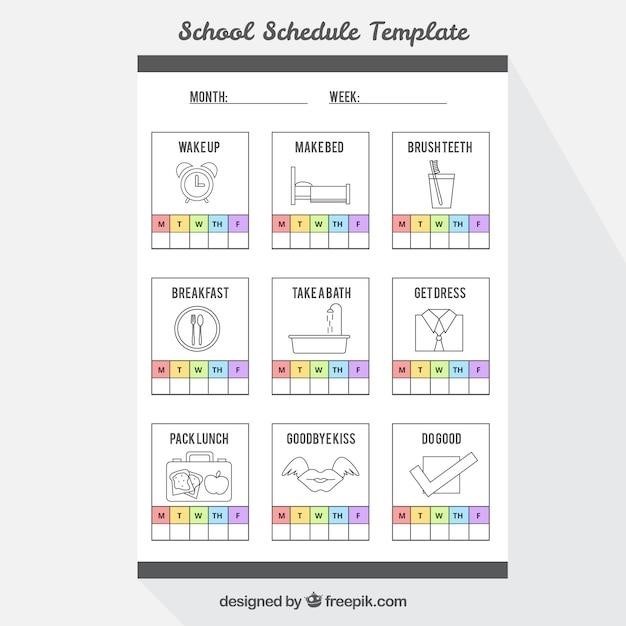Ethos, Pathos, and Logos Worksheets⁚ A Comprehensive Overview
Ethos, pathos, and logos worksheets offer a structured approach to understanding persuasive writing. These tools help students identify and analyze rhetorical appeals in various texts, enhancing critical thinking skills. Worksheets provide practical exercises, real-world examples, and assessments to solidify comprehension. They facilitate classroom integration, offering diverse learning experiences and adaptable strategies for different learning styles. The resources available online, including examples and answer keys, further support effective teaching and learning.
Understanding the Rhetorical Triangle
The rhetorical triangle, a foundational concept in rhetoric, illustrates the interconnectedness of ethos, pathos, and logos in persuasive communication. Ethos represents the credibility or authority of the speaker or writer, influencing the audience’s trust and belief. Pathos involves appealing to the audience’s emotions, evoking feelings like empathy, fear, or joy to persuade. Logos relies on logic and reason, employing evidence, data, and structured arguments to convince. Understanding the triangle’s dynamics is crucial for analyzing persuasive texts and crafting effective arguments. Effective communication often involves a balanced integration of all three appeals, although the emphasis may vary depending on the context and target audience. Worksheets focusing on the rhetorical triangle help students dissect how these elements work together to shape persuasive messages, ultimately improving their analytical and writing skills. Successfully employing the rhetorical triangle enhances the impact and persuasiveness of any communication.
Identifying Ethos, Pathos, and Logos in Texts
Identifying ethos, pathos, and logos in texts requires careful analysis of the author’s techniques. Look for statements that establish the author’s credibility (ethos), such as credentials or experience. Examine the language used to evoke emotions in the reader (pathos); consider the use of vivid imagery, emotional appeals, or storytelling. Analyze the presence of logical arguments, evidence, and reasoned conclusions (logos); look for statistics, facts, or logical progression of ideas. Worksheets often present excerpts from various texts, requiring students to pinpoint specific examples of each appeal. This practice enhances critical reading skills, teaching students to identify persuasive techniques and evaluate the effectiveness of arguments. Understanding how authors utilize these appeals allows for a more nuanced interpretation of persuasive texts, fostering media literacy and critical thinking abilities. By analyzing these elements, students can better understand how arguments are constructed and how to evaluate their validity.
Practical Applications of Ethos, Pathos, and Logos Worksheets
Ethos, pathos, and logos worksheets extend beyond simple identification exercises. They provide practical tools for crafting persuasive arguments. Students learn to incorporate credible sources to bolster their ethos, using evidence and logical reasoning to strengthen their logos. They practice employing emotional appeals strategically within their writing to enhance pathos, connecting with their audience on a deeper level. Worksheets often include prompts that challenge students to analyze existing arguments and revise them, incorporating stronger rhetorical appeals. This practical application helps students understand the nuances of persuasive writing and speaking, translating theoretical knowledge into tangible skills. The exercises promote critical thinking and self-reflection, encouraging students to evaluate their own writing and identify areas for improvement. Ultimately, these worksheets equip students with the tools to construct more effective and persuasive communications across various contexts.

Creating Effective Ethos, Pathos, and Logos Worksheets
Effective worksheets require engaging activities, real-world examples, and clear assessment methods. Designing interactive exercises and incorporating diverse examples ensures student engagement and comprehension. Clear rubrics and feedback mechanisms are crucial for assessing student understanding of these rhetorical appeals.
Designing Engaging Activities
To create truly effective ethos, pathos, and logos worksheets, incorporating a variety of engaging activities is paramount. Move beyond simple identification exercises; design activities that challenge students to critically analyze and apply these rhetorical appeals. Consider incorporating activities like analyzing persuasive speeches, advertisements, or excerpts from literature. Students could be asked to identify the dominant appeal used, explain its effectiveness, and even rewrite sections to emphasize a different appeal. Role-playing scenarios can also be effective, prompting students to construct persuasive arguments using different appeals and considering their target audience. Interactive exercises, such as matching statements with the appropriate appeal or creating their own examples, can enhance engagement and deeper understanding. Remember to provide clear instructions and examples to ensure students fully grasp the concepts and the expectations of the tasks. The key is to make the learning process active, stimulating, and directly applicable to the real world of persuasive communication. In short, design activities that move beyond passive recognition and encourage critical thinking and creative application.
Incorporating Real-World Examples
To make the concepts of ethos, pathos, and logos truly resonate with students, it’s crucial to incorporate plenty of real-world examples into your worksheets. Instead of relying solely on textbook examples, draw from current events, popular culture, and everyday experiences. Analyzing political speeches, advertisements, or social media posts can provide engaging and relevant contexts for students to apply their understanding. For instance, a worksheet could present excerpts from a political debate, asking students to identify the appeals used by each candidate and assess their effectiveness. Similarly, analyzing advertisements can help students understand how companies strategically employ ethos, pathos, and logos to persuade consumers. By incorporating diverse examples that reflect current trends and societal issues, you can bridge the gap between theoretical knowledge and practical application, demonstrating the ubiquitous nature of these rhetorical appeals in daily life. This approach not only improves student engagement but also strengthens their ability to critically analyze persuasive messages in various contexts.
Assessing Student Understanding
Effective assessment is key to gauging student comprehension of ethos, pathos, and logos. Beyond simple identification exercises, worksheets should incorporate higher-order thinking skills. Consider using open-ended questions that require students to analyze the effectiveness of specific rhetorical appeals within a given text. For example, ask students to evaluate how a speaker’s credibility (ethos) influences the persuasiveness of their argument or how emotional appeals (pathos) might affect the audience’s response. This encourages critical analysis and avoids rote memorization. Incorporating essay questions or short-answer responses allows for a deeper exploration of student understanding. Additionally, peer review activities can foster collaboration and help students learn from one another. Students can exchange their completed worksheets and provide constructive feedback on each other’s analyses. This approach promotes active learning and reinforces the concepts learned. Finally, providing clear rubrics that outline expectations for each assessment type ensures consistent and fair grading practices.

Utilizing Ethos, Pathos, and Logos Worksheets in the Classroom
Integrating ethos, pathos, and logos worksheets enhances classroom instruction. These readily adaptable tools offer diverse learning opportunities, catering to various student needs and learning styles. They facilitate interactive lessons and effective assessment strategies. The worksheets’ flexibility allows for seamless integration into various lesson plans and curriculum designs.
Integrating Worksheets into Lesson Plans
Seamlessly integrating ethos, pathos, and logos worksheets into lesson plans requires thoughtful planning and consideration of the specific learning objectives. Begin by identifying the relevant skills and knowledge you aim to reinforce, aligning the worksheet activities to these goals. Consider incorporating the worksheets as pre-reading activities to prime students for analyzing rhetorical strategies, or as post-reading exercises to solidify their understanding of the text. For instance, a worksheet could analyze a persuasive speech, asking students to identify examples of ethos, pathos, and logos used by the speaker and assess their effectiveness. Alternatively, a creative writing assignment could challenge students to craft their own persuasive piece, applying the principles of rhetoric learned through the worksheet activities. Remember to allocate sufficient class time for both individual work and group discussions, fostering collaboration and peer learning. Provide clear instructions and guidelines for completing the worksheets, ensuring students understand the expectations and the assessment criteria. Regularly review and adjust your approach based on student feedback and performance to maximize the effectiveness of the worksheets in your lesson plans. This iterative approach ensures that the worksheets become valuable tools for enhancing student learning and engagement.
Differentiation and Modification Strategies
To cater to diverse learning needs when using ethos, pathos, and logos worksheets, employ various differentiation strategies. For students needing extra support, provide simplified versions of worksheets with fewer complex texts or shorter tasks. Offer pre-teaching vocabulary and concepts related to rhetoric to build foundational knowledge. Consider pairing these students with stronger peers for collaborative learning, encouraging peer support and explanation. For advanced learners, challenge them with more complex texts and analytical tasks. This could involve analyzing subtle rhetorical techniques or comparing and contrasting the use of ethos, pathos, and logos across different texts. Incorporate open-ended questions to encourage critical thinking and creative application of the concepts. Modify the assessment methods to align with diverse learning styles; offer visual aids, graphic organizers, or oral presentations as alternatives to written responses. Provide choices in tasks, allowing students to select activities that best suit their strengths and interests. Remember that flexibility is key; adapt the worksheets and assessment criteria to meet individual student needs and learning preferences, ensuring inclusivity and equitable learning opportunities for all.
